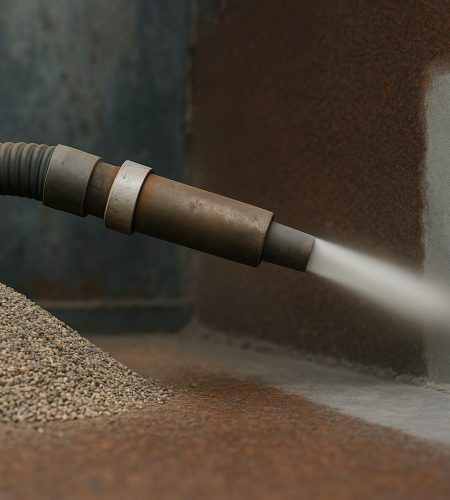When it comes to industrial surface treatment, selecting the right media is a critical decision. Choosing the appropriate abrasive material can make the difference between a sub-standard finish and a reliable, high-quality outcome. In this article we’ll explore the function of blast media, dive into the different types available, look at key performance criteria and touch on how businesses such as Shot Blast Media can unlock value through strong media choice.
Understanding Blast Media
In manufacturing, “media” (sometimes called blast media) refers to the abrasive particles that are propelled against a surface to clean, texture or finish it. In processes like surface preparation and coating, the media affect everything from adhesion performance to longevity of the finished part. In the case of Shot Blasting, the media are often metal spheres or angular grit that strike the substrate at high velocity, either via compressed air (air-blast) or via a high speed wheel (wheel or centrifugal blasting).
Common Media Types
Different substrates and end-use requirements call for different media. Here are a few of the key ones:
- Steel shot / spherical metallic media: often used for components requiring uniform cleaning and minimal damage.
- Steel grit / angular abrasive media: more aggressive, good for removing heavy scale or coatings.
- Glass beads, plastic media, walnut shell or other organic media: for gentler finishing, non-ferrous substrates or where low dust and minimal contamination matter.
Why Media Choice Matters
Media characteristics such as size, shape, hardness and composition have a significant effect on outcomes. For instance:
- A larger size or more angular media tends to produce a rougher profile, which is useful when you need strong adhesion for subsequent coatings.
- Spherical shot is better when you want a more uniform finish, less damage, or a peening effect rather than heavy removal.
- Reclaimable media (which can be used repeatedly) reduce cost and waste – a common feature in modern systems.
Application Scenarios
Industries like construction, manufacturing, automotive and aerospace all rely on sound media selection. For example: preparing steel components for powder coating, removing rust from ship hulls, cleaning concrete floors ahead of overlay installation, or rendering surface finishes on decorative architectural metalwork.
When specifying a media solution, one must consider the substrate material (ferrous vs non-ferrous), what contaminants are present (rust, scale, paint), and what surface profile is required for the next stage (coating, welding, bonding). Using the wrong media can damage the part, introduce contamination or fail to achieve the required adhesion.
The Strategic Value of Professional Media Services
When working with a specialist provider like the team at Shot Blast Media, their value lies not just in delivering blasting services but in helping select the optimal media for your project and aligning the process with your strategic outcome. Their website emphasises that they work to “dig deep and do all the research … test and refine to make sure the message is right” when it comes to film and media production. That strategic mindset can translate into surface-preparation services too — careful planning pays dividends. Shot Blast Media
As you mature in your processes, consider not just the immediate cleaning but how the media choice impacts the downstream operations: coating adhesion, maintenance costs, component lifespan and even sustainability (reuse of media, minimised dust/emissions).
Linking Media Selection to Outcome
Effective media selection means you’re not simply “spraying something onto a component” — you’re engineering the surface. For example, when you engage with companies like Shot Blast Media, you’re investing not just in blasting but in outcome-driven performance. You want a process where the surface is tailored to support your next stage: maybe a high-performance coating, maybe welded fabrication, maybe precision finishing.
When the term “shot blast media” appears in contracts or specifications, it must always be qualified: what size, what hardness, what shape, what reuse rate, what substrate compatibility. The devil is in the detail.
Key Takeaways for Engineers and Project Managers
To sum up:
- Always start by defining your surface requirement (cleanliness, profile depth, substrate type, downstream process).
- Select the media accordingly (size, shape, hardness, composition).
- Partner with suppliers who understand the strategic dimension (not just blasting, but outcome).
- Monitor media condition (wear-out, contamination) and reclaim/recycle when feasible.
- Recognise that a properly chosen media path can reduce cost, improve quality and reduce downstream maintenance.
In conclusion, while the phrase shot blast media may sound generic, in reality it encompasses a suite of highly technical variables. Getting the media right is foundational for any surface preparation task — and aligning that with partner services makes all the difference.

